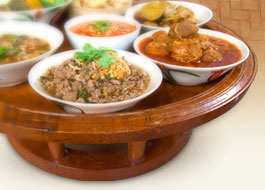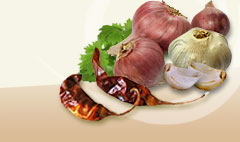Raddish |
|
|
 | Raphanus Satiovus Linn. Var. Caudatus Alef. |
|
| |
 | Cruciferae |
|
| |
 | Raddish |
|
| |
 | Phak pherk (Rattana Phromphichai, 1999, p. 714) |
|
| |
 | Annual or biennial plant, 0.3 cm.-1.0 cm. high, round, vertical and hollow stem, slightly hairy.
Leaves simple, alternate, succulent, lyrate, globrous, glaucous 3-4 cm. wide, 9-5 cm. long, periole 3-4 cm. long. Inflorescence of loose clusters, 10-50 cm. long, 4 petals, white to lilac.
Silique oblong, 0.5-2.0 cm. wide 5-16 cm long, sponge like inner wall, 2-10 round seeds, 3-5 mm. in diameter.
Flowers bloom around June-December and put out pods around July-February. The plant is popularly grown in the wet soil in a field or home garden. (Rattana Phromphichai, 1999, p. 714)
|
|
| |
 |

Calcium, phosphorus, iron and Vitamin C (Phak Phuen Ban Ahan Thai, 2005, p. 250; Phak Phuen Ban Ahan Phuen Mueang, 2007, p. 53) Young pods are blanched and eaten with namphrik and mixed with vegetable curry like kaeng khae with ant eggs, or fish or frogs. (Rattana Phromphichai, 1999, p. 715) |

Pods and leaves enhance the appetite and relieve stuffy stomach or indigestion and make kidney stones soften and dissolve. (Phak Phuen Ban Ahan Thai, 2005, p. 250) |
|
| |
 | Winter |
|
| |
 |
Rattana Phromphichai. (1999). .Khi Hut, Phak. InSaranukrom Wattanathamthai Phak Nuea (Vol.2,p.714). Bangkok: The Siam Commercial Bank Foundation for the Encyclopedia of Thai Culture. (in thai). Phak Phuen Ban Ahan Thai. (2005). Bangkok: Saeng Daet.. (in thai). |
|
| |
|
|




